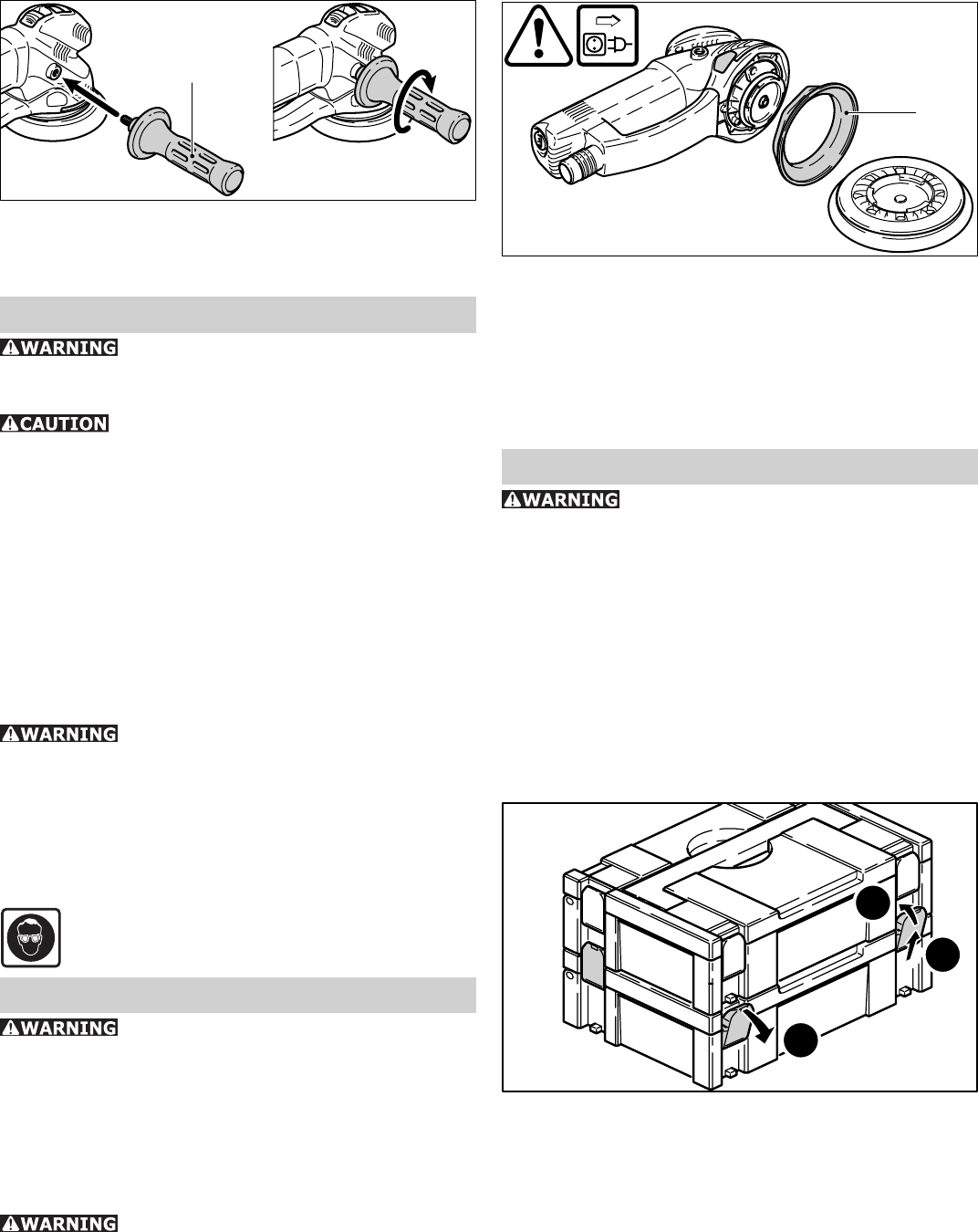
6
Auxiliary handle
8.1
The auxiliary handle (Accessories, 8.1) can be
screwed onto either the right or left of the gear
head.
Working with the tool
Always secure the workpiece in
such a manner that it cannot move while being
sanded.
Never overload the tool by using
too much pressure! The best sanding results
are achieved when applying moderate pressure.
Sanding performance and quality depend primarily
on the choice of the right abrasive.
For safe guidance, hold the tool with both
hands.
Application
Tables A and B show the settings we recommend
for different sanding and polishing work.
Metalworking
Observe the following safety precau-
tions when working on metals:
• Pre-connect a residual current circuit-breaker
(FI, PRCD).
• Connect the tool to a suitable dust extractor.
• Regularly clear out any dust accumulations in
the motor housing.
• Wear protective goggles.
Maintenance and care
All maintenance or repair work re-
quiring the motor housing to be opened must be
carried out only by an authorized service work-
shop. Maintenance or repair work carried out by
an unauthorized person can lead to the incorrect
connection of the wiring or other components,
which in turn can lead to accidents with serious
consequences.
Always remove the plug from the
mains supply socket before carrying out any work
on the machine!
Always keep the tool and in particular the ventila-
tion slots clean.
Pad brake
9.1
The rubber collar (9.1) prevents the sanding pad
from revving up to maximum speed in an un-
controlled manner during eccentric motion (fi ne
sanding). Because the collar wears down in the
course of time, it has to be replaced by a new
one (order no. 465472) as soon as there is any
reduction in the braking effect.
Accessories, tools
For safety reasons, only use original
Festool accessories and tools!
The accessory and tool order number can be found
in the Festool catalog or on the Internet under
www.festool-usa.com.
Systainer
Many Festool products are shipped in a unique
system container, called "Systainer". This provides
protection and storage for the tool and acces-
sories. The Systainers are stackable and can be
interlocked together. They also can be interlocked
atop Festool CT dust extractors.
10.1
10.2
10.3
- Place one systainer on top of the other.
- Release all four latches on the lower systainer
by pulling back at their top edges (10.1).
- Slide all four latches upward (10.2).
- Snap all four latches back to their fl at position
(10.3) so they engage the stacking tabs of the
upper systainer.


















